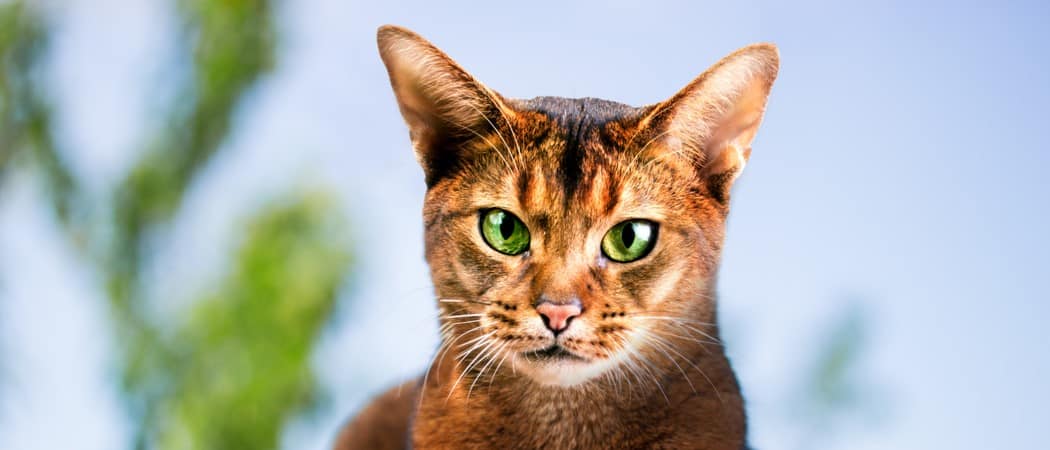The origin of the Abyssinian cat breed is shrouded in mystery. It was once believed that the Abyssinians were cats imported from Abyssinia (now Ethiopia), but the cat actually earned the name in reference to the Abyssinian War, and some cats during that period were imported by colonialists to Europe. These cats were exhibited in cat shows in the 1800s and called “Abyssinians.” But there’s no proof that those imported cats were true early Abyssinians.
Recent genetic tests have shown that the Abyssinian breed most likely originated in parts of Southeast Asia and the coast of the Indian Ocean. The earliest example of an Abyssinian is a taxidermal exhibit that was purchased between 1834 and 1836 by a museum supplier. It was labeled “Patrie, domestica India,” and is still on exhibit at the Leiden Zoological Museum in the Netherlands.
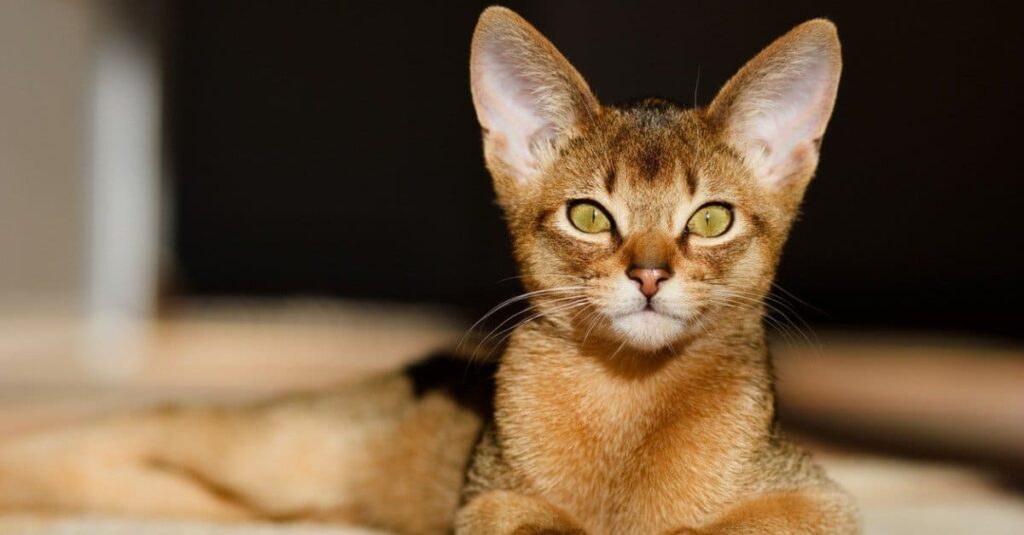
Traits: What To Know Before You Buy
The most important thing to know about an Abyssinian, or Aby for short, is that you are not getting a couch potato out of the deal. If you don’t want to be followed around and have a cat underfoot, you should think about some other pet. Abyssinians are born to superintend your activities or those of other members of your family.
There are cats that like to be under things and cats that like to be above things. If you can’t find your Aby, then look up. Despite speculation that their ancestors came from a desert environment, the current breed is very fond of trees and other high perches.
Abyssinians are famously good-natured so long as they have been properly introduced. They can peacefully co-exist with birds, dogs, small children, and even goldfish. If you’ve ever fancied having a cat that can play fetch, you may well get your wish with an Abyssinian.
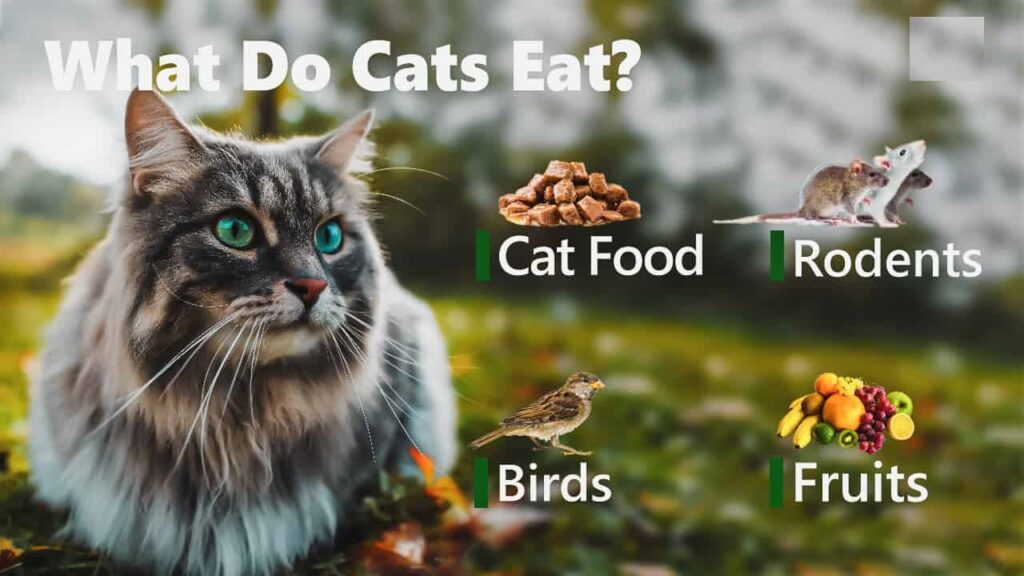
Personality
If there is one complaint about an Abyssinian’s personality, it may perhaps be that they are almost too smart. They love to learn, and they learn by observing things at close quarters. This means that they are not shy about getting into your business while you are doing it.
They are also very good at figuring out how to get into things or spaces that you may not want them in. These inquisitive creatures always want to know what’s on the other side of that barrier.
One area that often surprises people about the Abyssinian personality is that they are very affectionate but notoriously disinterested in being a lap cat. They like curling up beside you, not on top of you. In this position, they are perfectly content to let you pet them and scratch their ears but they are not noted for being a cat you hold or carry around.
While Abyssinians are open-minded about their companions in life, they do like having others of one sort or another around. No matter if it is a human or another cat, they are very sociable and can become bored and destructive if left alone too much.
They have very loud motors when it comes to purring but they balance this with the rather sparse use of their voice. If they talk, it’s because there is a topic of importance they wish to discuss with you.
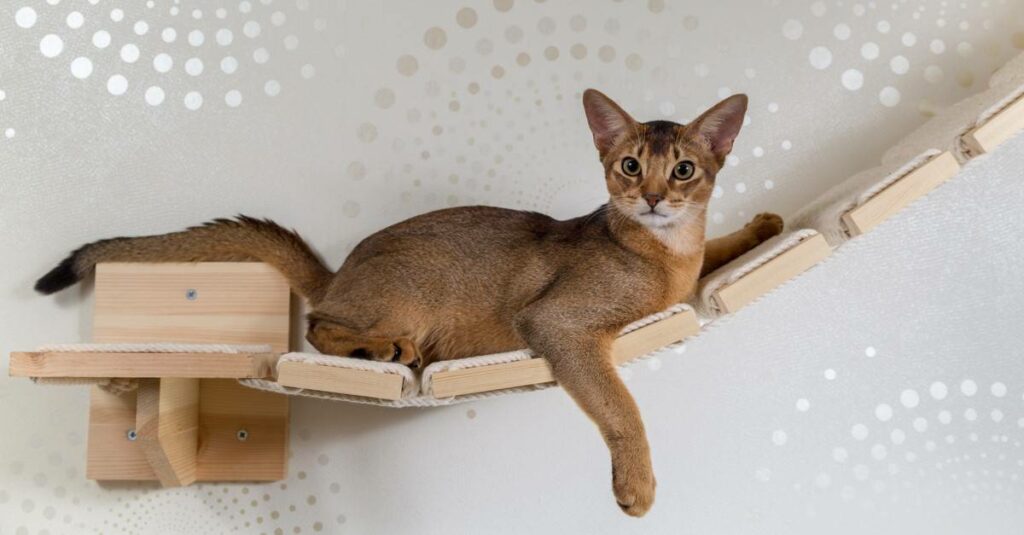
Size And Weight
The Abyssinian is a medium to small size breed of cat. Although medium in overall size, their very lithe build, and thin legs make them register on the smaller end of that medium scale so far as weight is concerned.
Abys generally run from 8 to 10 inches in height and is anywhere from 12 to 16 inches in length. They tip the scales at a svelte 8 to 12 lbs.
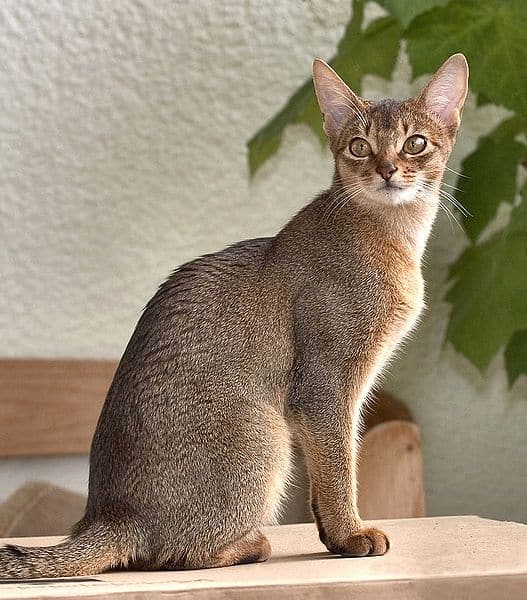
Prices
As purebred cats, Abyssinians are not inexpensive pets. Kittens can cost anywhere from $500 to $2200. Rarer Abyssinians and those coming from premier bloodlines can run all the way up to $5000.
The wild card in this is that you can obtain an Abyssinian kitten for much less than these numbers indicate, but they are not capable of being used to breed more Abyssinians. For a so-called “pet” Aby, you can find common ones in the $500-900 range. Without getting into exotic toys, expensive foods, or unanticipated health issues, the average cost of maintaining an Abyssinian is about $400 a year.
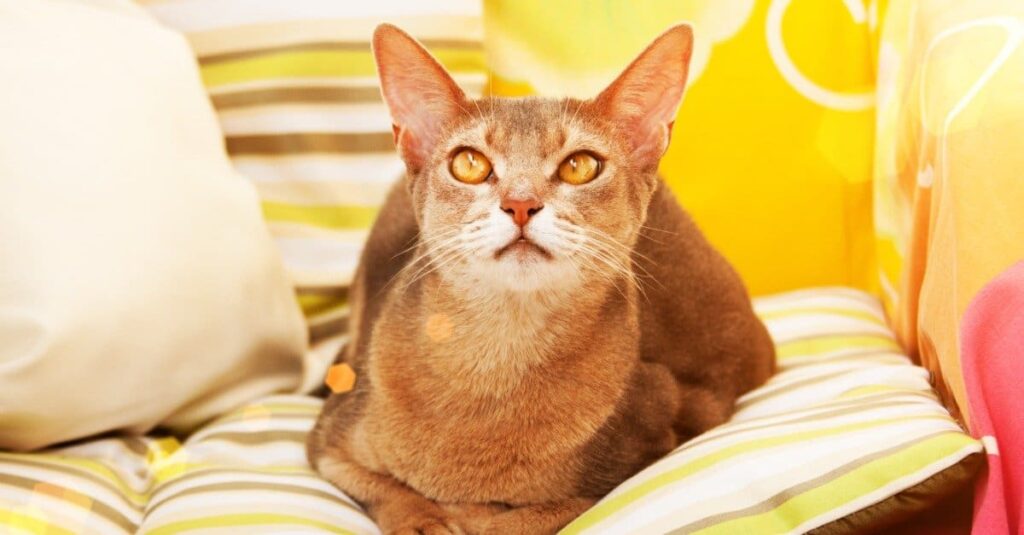
Kittens
Like most other cats, Abyssinians have litters in the range of about six kittens. Kittens tend to be somewhat darker than their parents when born but will lighten up as their distinctive coat develops.
They reach full height in about six months. After that, they gradually put on bulk until they are fully developed at around one year from their birth.
Like their parents, the kittens are very playful and intelligent. They make wonderful pets for children to grow up with.
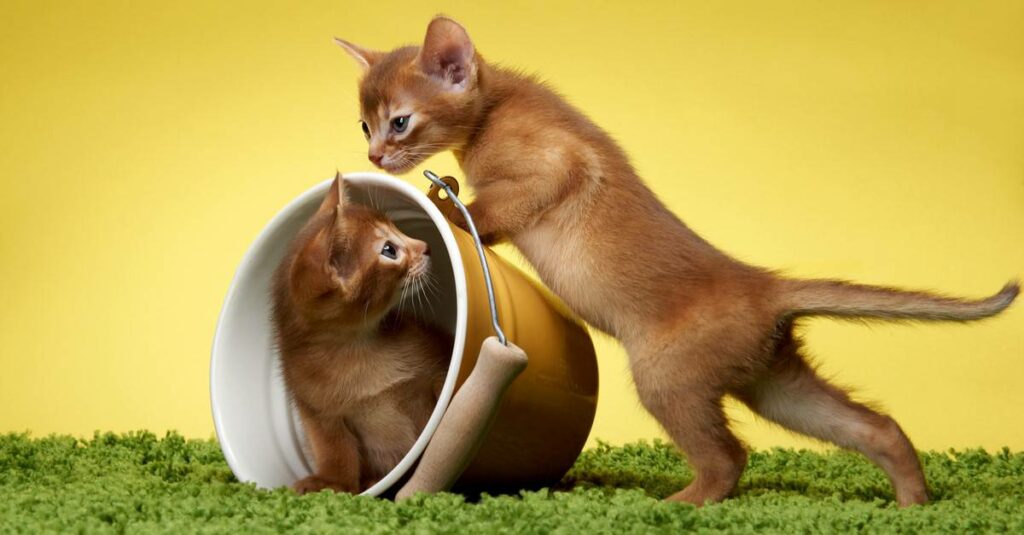
Lifespan
Their curious nature and love of heights can artificially shorten their natural lifespan due to accidents. Barring any early death due to misadventure, however, Abyssinians easily last into the 13-15 year range. With proper care and diligence, living into their 20s is not too uncommon.
Given the large initial investment in acquiring one, Aby owners usually watch their cat’s health very carefully and tend to their veterinary needs promptly. This means that Abyssinians are less likely to develop conditions that require them to be euthanized at an earlier age.
Their longevity is also helped by their endomorphic body characteristics and their generally vigorous levels of activity throughout their lives. Conversely, the relatively small genetic stock of the breed has led to some lingering hereditary issues that appear more often in Abyssinians than in the general cat population.
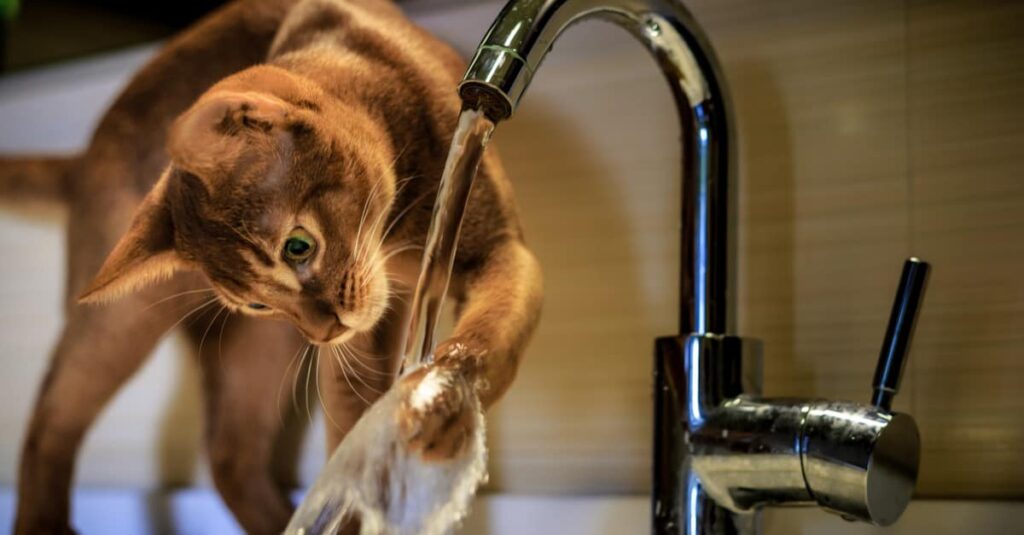
Among the diseases which most commonly afflict these cats are:
- Chronic Renal Failure – Also known as simple kidney failure, this hereditary condition is one you will want to guard against by carefully examining the ancestry of any prospective kitten you may be in the market for.
- Hyperthyroidism – The general litheness of the breed can be accentuated by hyperthyroidism. This condition forces the body to burn energy it does not necessarily need or want to burn. This in turn causes the already thin cat to be thinner still and makes it harder for them to put or keep weight on their bodies. Medication can control the problem.
- Luxating Patella – In a human, this would be known as a dislocated kneecap. Painful to suffer, painful to force back into its correct position, it is nevertheless not a major worry since a large number of quadrupeds have been known to suffer from this malady at one time or another.
- Progressive Retinal Atrophy – In the long-lived Abyssinian, retinal atrophy first strikes in the form of increasing night blindness. This eventually develops into full-fledged blindness under all conditions. This is a genetic trait of the breed for which there is no cure. The only available prevention is to carefully scrutinize the genealogy of any prospective kitten or cat purchase.
- Pyruvate Kinase Deficiency – This is the big one for Abyssinians. Pyruvate Kinase Deficiency is an inheritable red blood cell condition that causes anemia and other blood afflictions. The only known cure is a bone marrow transplant.
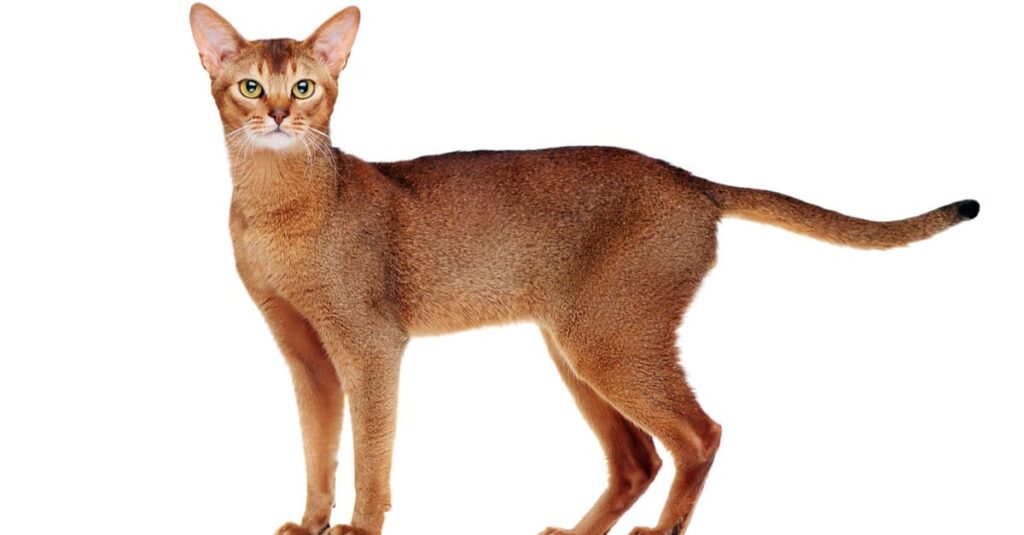
Breed Versus Mixed Breed
To be a genuine Abyssinian, breeders require that a specimen must be one of four colors.
- Ruddy – The first recognized coat color for an Abyssinian is ruddy, which is a combination of reddish-brown with ticks, or small lengths, of black peeking through in places. This ripple of multi-hued fur color along any individual strand is one of the main distinctive features of an Abyssinian. The black is found on the ends of the fur and is most pronounced on the tail and at the lower extremities of the paws. It must also have a fully red nose to qualify.
- Cinnamon – More reddish than the brownish Ruddy Abyssinian, and more of an orange-brown in the underneath areas of the coat. All Abyssinians require the darkest hues to be on the tips of the fur. The Cinnamon has Chocolate Brown at the tail tip and feet as well as a darkish pink nose.
- Fawn – The lighter-hued Fawn Abyssinian is somewhat evocative of a light Siamese color coat with rose-beige as the primary color and light brown at the ends. Light cocoa brown on the tail tip and feet are matched with a salmon-colored nose.
- Blue – The Blue Abyssinian is not a blue cat but rather one that has a warm beige coat somewhat similar to the Fawn but is tipped with bluish-gray slate highlights rather than brownish ones. Tail and lower paws have the same requirement for predominate dark hues and the nose is a reddish pink.
Very slight variations of these color schemes are enough to disqualify a cat from being a cat breeder’s standard purebred Abyssinian. Black hair on a red Aby will disqualify. With few exceptions around the face, white patches or spots will disqualify. A dark necklace, or ring that goes entirely around the neck area, will disqualify. There are no recognized crossbreed Abyssinians.
There is, however, a separate group called Silver Abyssinians which includes the colors: black silver, blue silver, fawn silver and sorrel silver.
